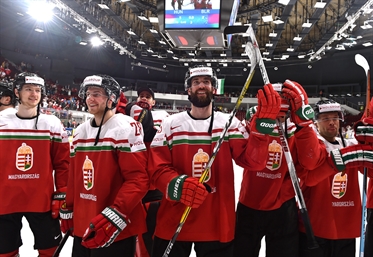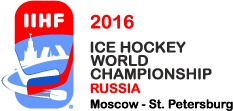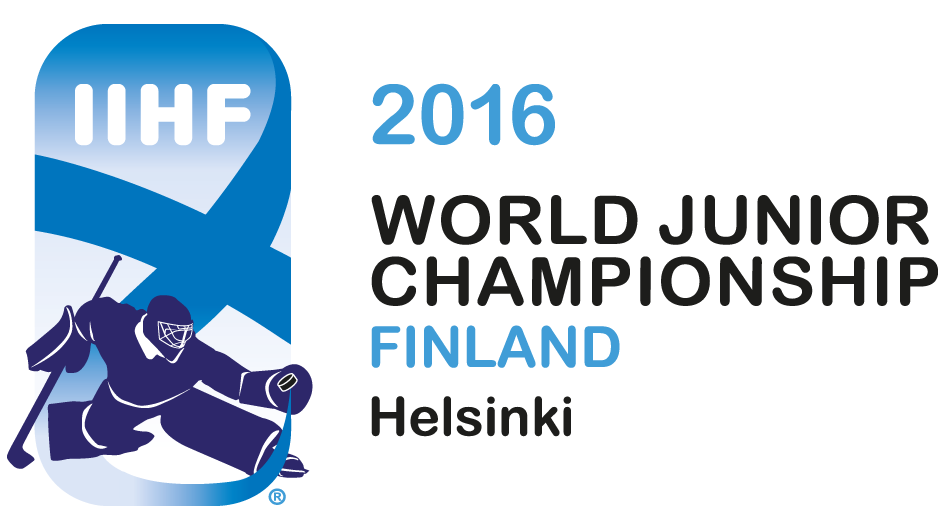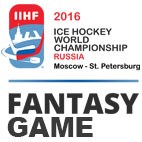Way back when
Way back when
Hungary once finished 5th at Worlds

 ST. PETERSBURG, RUSSIA - MAY 14: Team Hungary salutes the crowd during preliminary round action at the 2016 IIHF Ice Hockey World Championship. (Photo by Minas Panagiotakis/HHOF-IIHF Images)
ST. PETERSBURG, RUSSIA - MAY 14: Team Hungary salutes the crowd during preliminary round action at the 2016 IIHF Ice Hockey World Championship. (Photo by Minas Panagiotakis/HHOF-IIHF Images)
But the victory highlighted just how different the game of today is compared to the pre-World War II years.
That it took 77 years for this win wasn’t because of a huge losing streak. It was because Hungary has played in only one top-level tournament since 1939.
Way back when Hungary was a regular participant in the top level. Indeed, the nation played in every World Championship between 1930 and 1939, finishing as high as fifth in 1937.
But Hungary is not alone. Consider that Belgium once finished seventh (in 1950) and appeared in many top-level tournaments in the 1930s and into the ‘50s.
Austria as well had impressive teams then, winning bronze medals in 1931 and 1947. Great Britain, behind the incredible goaltending of Jimmy Foster, won Olympic gold in 1936 as well as silver at the 1937 and 1938 World Championship and bronze at the 1935 Worlds. It last competed in A Pool in 1994 and has since become a Division I level team rarely coming close to reaching the top level again.
Poland had strong entries in the early days as well, notably in the 1930s. It placed fourth in 1931. Romania played several events in the ‘30s, but after an impressive seventh-place showing in 1947 withdrew from IIHF tournaments and didn’t play again until 1959. Its last great hurrah was participating in the 1980 Olympics in Lake Placid. In 2003 Poland played one year in the top division.
At the other end of the spectrum is Finland. It didn’t play its first Olympics until 1952 and didn’t win a medal until 1988. In World Championship competition, incredibly, Suomi didn’t win a medal until 1992. Yet today it is entrenched among the Big Six and produces its fair share of world-class players with regularity.
The Russians (Soviets) didn’t play until 1954, and Sweden didn’t participate regularly until 1947, yet they, too, are part of the Big Six.
The United States has been all over the map. It was a regular medal winner at both the Worlds and Olympics through 1960, then they played several years in B Pool as late as 1983. Since then it has been in the top level, but when it wins a medal these days it’s always bronze and it occurs too rarely for such a hockey-rich nation.
Ditto for the Swiss. They won medals at seven World Championships between 1930 and 1953, but between 1961 and 1997 they played in B Pool every year but seven. In fact, the Swiss were even in C Pool in 1974. They have been in the top pool since ’98, but have won only one medal, a silver in 2013. Try as they might, they can’t claw their way into the top echelon of nations, but they are plenty strong to not have to worry about regelation either.
Other nations flirt with the top level and are regular entrants in Division I. Italy, Ukraine, France, Kazakhstan, Slovenia, and Poland are among a group that has history and success in its resume, but also its share of disappointments.
All of which is why Denmark’s ascent in 2003 is remarkable, not because of one year but because it has managed to stay in the top level every year since. It gives the Hungarys of the world hope, while it allows us to recall nations that once had glorious days before the war and are looking to find new footing in the 21st century.
So now we watch to see if Hungary can scrape enough points together in the standings to stay up another year.
Back to Overview














































































